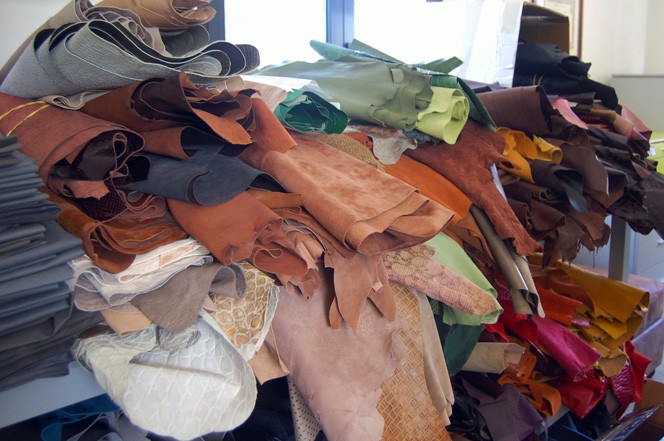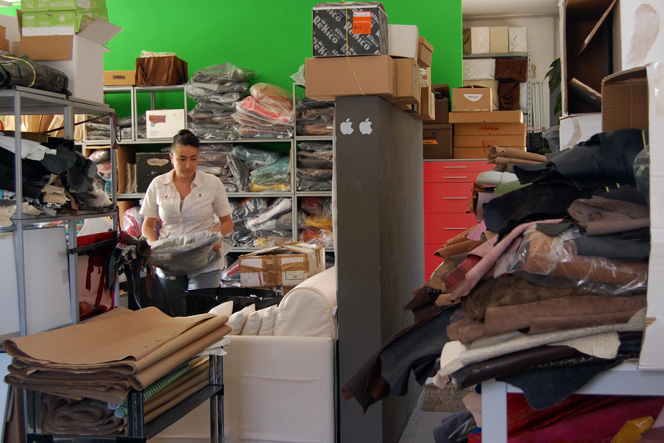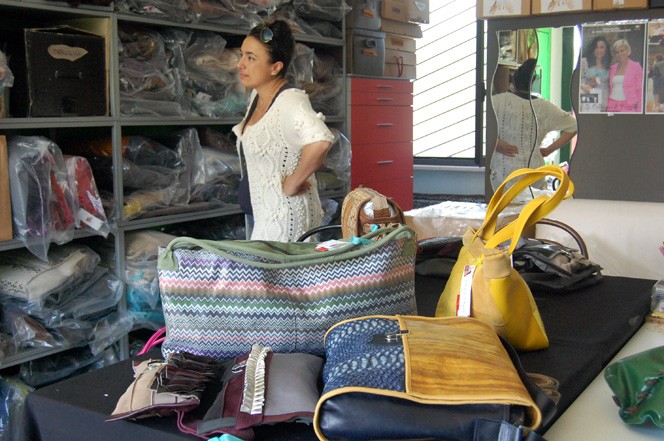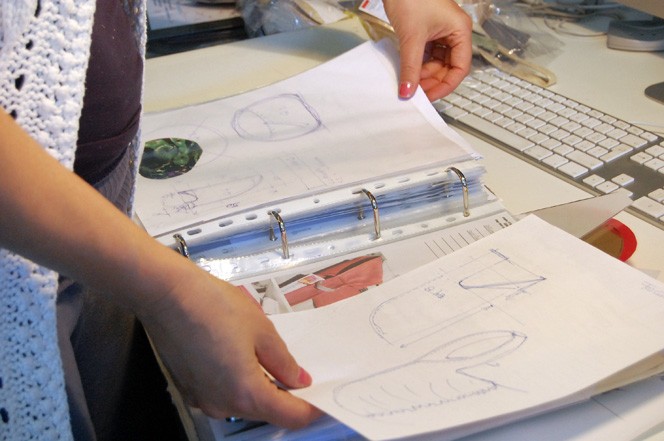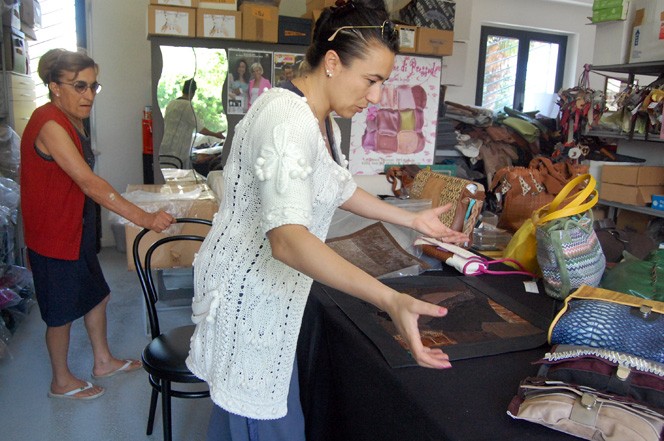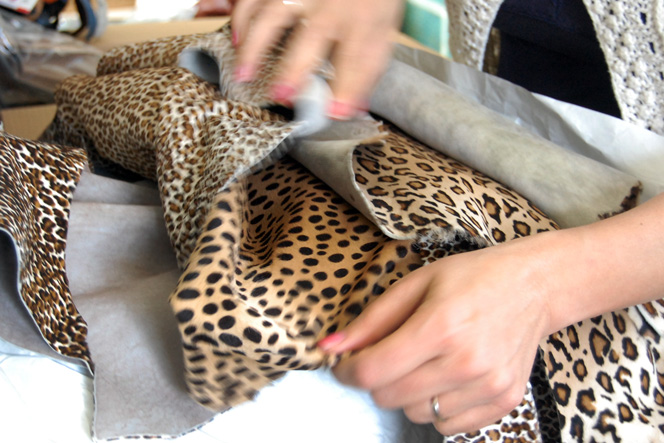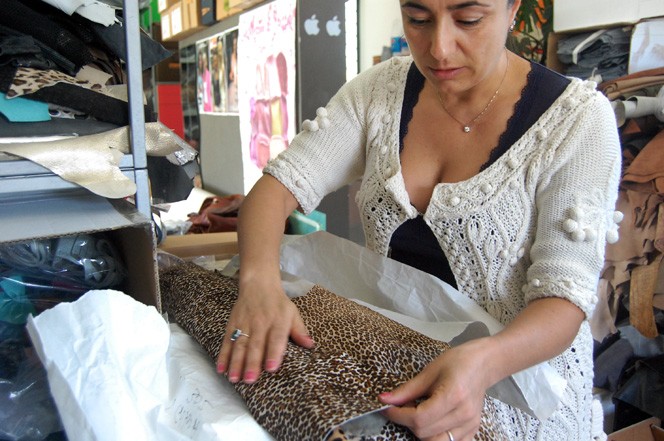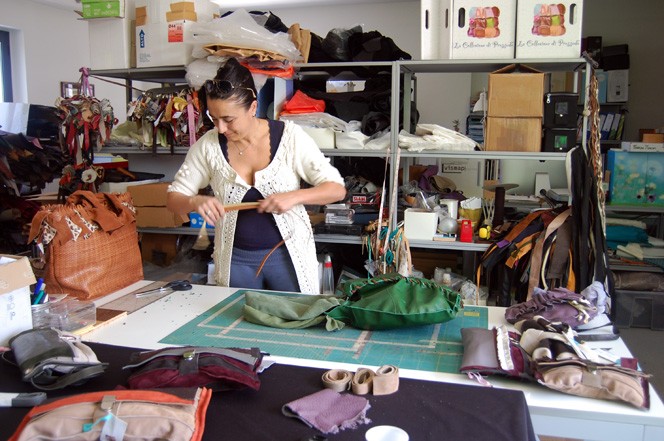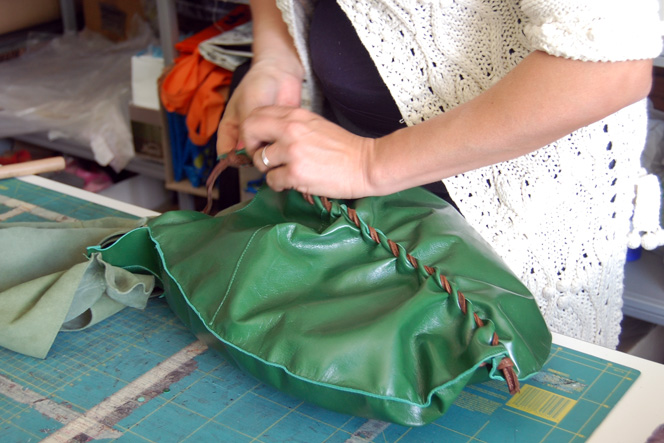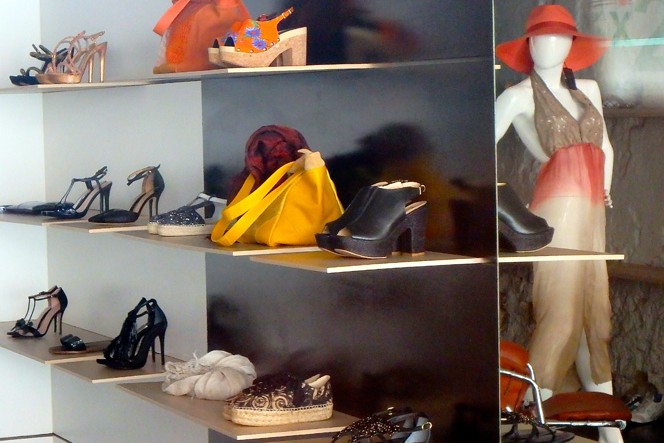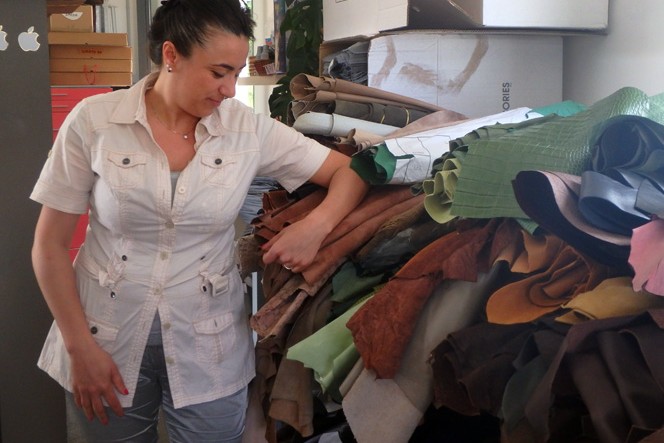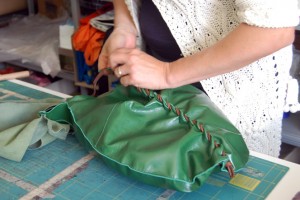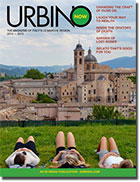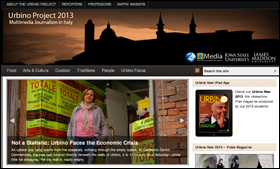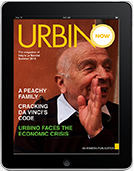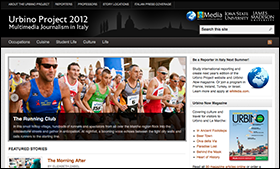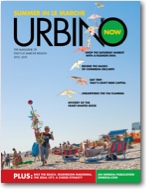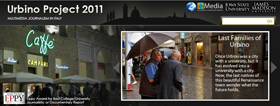She Gives Leather an Afterlife

Designer Debora Uguccioni turns leather leftovers into fashionable bags
Six years ago as the work day was coming to an end, Debora Uguccioni found herself alone at a factory in Fano that made upholstery for boats. As all the other lights went off, the single lamp around her work space stayed lit. After years of working behind a desk designing furnishings, she had decided to get her hands dirty.
A box of leftover leather was left with her that night and, with permission from her manager, she rummaged through it. She gathered outlines, sketches, and tools for working these bits of material. In a little over an hour, Uguccioni’s manicured hands had created a leather handbag from the random pieces. She lit her own light that night, an idea for turning scraps into fashion items, and it guided her into a new creative career as unique as the one-of-a-kind bags that have become her trademark.
Uguccioni is now creator and designer of a company called La Collezione di Pressede, “Collection of Pressede.” Pressede being her great grandmother’s name and originating from Prussia. Prussia being a German kingdom that was dissolved in 1947 after the monarchies were abolished and the nobility lost its political power. According to Uguccioni, Pressede is not easy to remember but it’s also unlike any other name. She prefers to use the name because it is a part of her family and holds a special place in her heart.
Uguccioni gathers excess leather scraps from several types of manufacturers. She started off buying leather from the home furnishings factory she was working for. After working behind the desk with one of these factories, she soon had a change of heart and decided it was her time to start working with the one item she was in love with since the age of five, leather.
As a young girl, Guccioni had met someone down the street of her town who worked with leather. She received a sensation that she couldn’t receive from anything else, one that was enjoyable and memorable. It was the vintage smell that lingered, the soft material that was warm within her hands, and the smooth surface she was able to brush against her cheeks that she fell in love with. Uguccioni was more fascinated with leather than a kid in a gelato store.
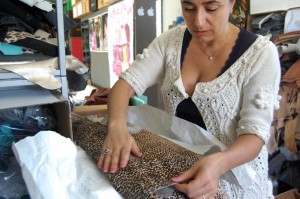
She likes the worn, beat-up look of the scraps left over from shoe manufacturing and other processes.
As she soon realized that her bare hands were capable of more than she expected, she went on to create more of these handbags by the day. Rearranging her priorities, she jumped into the pool of becoming an entrepreneur and soon made her company her number one priority. Managing both jobs as an interior designer and creator/designer of her company, she worked harder and harder to create these bags. With creating a business comes making business. She soon started to purchase leather scraps that were left over from multiple companies. The leather was considered no good anymore since it was torn, beaten, scratched, or folded. To Uguccioni, the scraps were special, torn in ways the hand couldn’t create. It was beaten down to the faded black you can only get after so many bends and scratches, engraved in textures that weren’t used by stamps, and folded to cuts that were not your typical circle and square combinations. Uguccioni had a mission; to give a new life to one that was considered wasted.
She can make a bag in an hour or two, sometimes less. Uguccioni decides which drive she wants to make to gather her leather from companies who have a wide variety of leftover scraps. Once the decision is made, she makes her drive out, a drive that sometimes is about four hours long to Florence, or farther to another big city. She only chooses what she finds to be useful to her idea for the bag and or she decides what patterns and colors she needs for the rest of the season. There are only so many times the champagne rattlesnake pattern will come out. Once she finds exactly what she envisioned, she begins.
She stands up and makes her way to the other side of a file cabinet that divides her workspace from her small kitchen, which contains a coffee machine, a toaster, and groceries. She sighs with relief, turns the corner, and in less than a minute returns with a cup of coffee. “It’s the life I live.” says Uguccioni. With a smile from ear to ear, she adds, “This is my second home, I spend more than half of my day here.” Uguccioni sets down the finished cup of coffee and trades it in for a small hole punch that was to create holes for the weave in her new idea. As she organizes her working desk, she reaches over her back to grab scraps of leather off the shelf of scattered material and utensils. The bag she is creating is from a picture of a lily pad she cut out of a magazine.
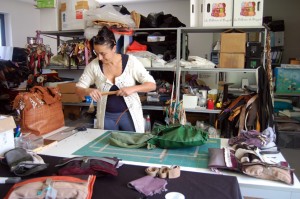
Designer Uguccioni makes straps to finish off a hand-bag inspired by the shape of a lily pad, a new product for her.
Her ideas fly by her from left and right, whether it’s a picture within a magazine, a bush in her garden, or a dress of a woman walking past her in the piazza of Fano. She starts off with a graph, a graph that has been taped with multiple sizes of squares, rhombuses, rectangles, trapezoids, and even hexagons. Once she lays out her leather onto the bag, she cuts her needed pieces and stores away the pieces she won’t use for another creative bag soon to come. Once the pieces are cut, they are taken to the seamstress for pressing and cleaning; she then finds the cut for her soon-to-be bag. Once the leather returns to the creative hands of Uguccioni, she examines it for final touches: stitching, loose strings, or unpressed sections.
Two half circles of green are laid out on the table alongside multiple straps. The assembling of the bag begins as she reaches to the right of her for the hole puncher. Uguccioni grabs a wooden block and lays it underneath the leather material. The hole puncher makes it way from the top to bottom of the half circle pieces. She finishes with the last hole and turns over her shoulder once again to pull out two pieces of a milk chocolate brown leather strap. After untangling the two pieces from the rest of the bundle tied onto the rest of the shelf, she turns to face the half circles. So she begins to weave in the straps into the holes making it look as if it was as easy as preparing your shoe laces on a new pair of shoes. Half way through the process of weaving the two pieces together, she smiles and changes her mind. Her creativity is exposed through her smile as she unties each piece just to weave it back into place with a different twist.
Uguccioni continues to weave together the lily pad-inspired pieces. In less than twenty minutes, she’s done.
Smiling at her product, Uguccioni touches it up by adjusting the straps. She slides the bright green bag onto her shoulders to model it, she smiles and gently looks over her shoulder to examine the bag. Another proud accomplishment recognized by the creator herself. Uguccioni takes the bag off, scrambles through the web of yarn, which is tied onto her working shelf, and picks out a piece of fuchsia yarn. She winds the fuchsia strap around the straps of the bag to make them two inches smaller in width. Once the knot is tied, a sigh of happiness and relief is let loose and within an hour, her lily pad bag is complete.
“You will never find the same model or design,” says Uguccioni about her products. She gives each bag a serial number and records it with a picture of the bag in her four-inch binder of finished products. The bags she creates will never look the same because of the different patches of leather she uses. She enforces the idea that each bag should have its own style and own patchwork and due to the fact that she is limited to pieces of leather that are no longer being used, some patches she purchases are bigger than others.
Creative, unique, and special; each bag holds a special place in Uguccioni’s heart. Her husband suggests that she make simpler and smaller bags, but she loves the idea of a big creative bag. It’s more noticeable, she says, and you can fit more inside. Ladies, you understand.
Uguccioni has multiple businesses that help sell her one-of-a kind bags, including Donati Shoes, located in Fano’ s piazza, which sells her bags alongside the work of other designers.
In hopes that she could share her creativity with more of the world in different states and even countries, Uguccioni created about 700 bags her first year, only selling 500. Now, six years later, she sells roughly 1,000 bags a year.
With the hard work and dedication seen in her eyes and smile, her still well-manicured hands continue to create something new every day. As she dusts away the minuscule pieces of string and holes from the punch into the trash can, she gently stores away the rest of the leather. With her sense of creativity, she will easily turn the smaller pieces into a floral decoration that can be tied onto just about anything. She gently lays the bigger pieces of leather on a table in the corner of her studio where the rest of the leather is organized by color. Whether it is as tiny as the size of her fist or a yard left to make a new wallet, no leather is to be wasted. To this day, she considers her company as a great achievement. Uguccioni doesn’t want to ever change it because of the people who appreciate her art work. Where there is a light, there is a way.
This article also appears in Urbino Now magazine’s Arte e Cultura section. You can read all the magazine articles in print by ordering a copy from MagCloud.
The editors of Urbino Now thank the folks at Living in Le Marche for bringing Debora Uguccioni’s work to our attention.



